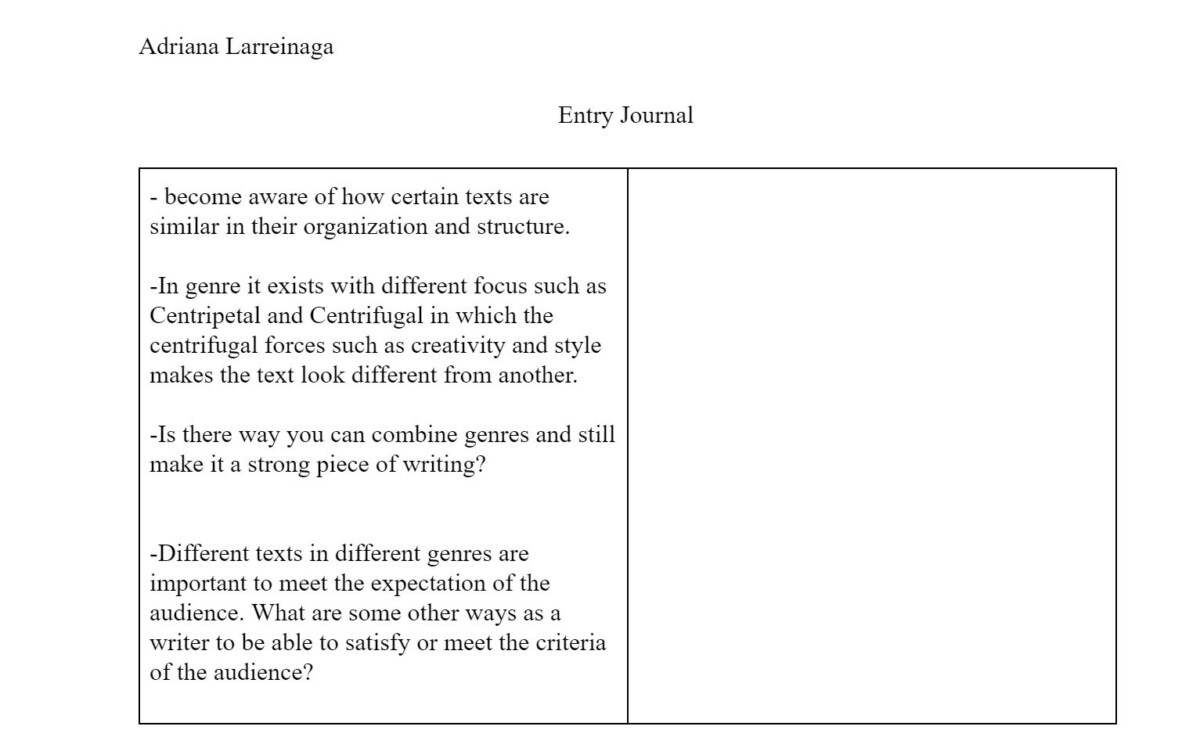The conventions of an education narrative is being able to evoke emotions, visual images and communicate ideas in a descriptive way that would draw the audience’s attention. For instance, writing an anecdotal that relates back to your own experience which in this case with education or language has impacted you as an individual so the targeted audience can feel that similar connection, making the writing piece stronger. When describing is very crucial to be aware of the genre you are trying to portray and the use of language which can be helpful to look at other authors such as Amy Tan and Jose Olivarez. Thus, one good place I can start on my own education narrative is listing some ideas of what I would like to inform the audience about my own experience with language or education just as Olivarez that he was able to take a different approach on the purpose of writing poems. He wanted people to feel identified and have a feel of “some comfort” and inspire those to write more poems. Also, figure out a way I can structure my narrative in a way that can be easy for the audience to follow. One of my concerns for this narrative is being able to be descriptive enough that the reader could illustrate the scenes in their minds and capture their attention throughout the text. One of the profound experiences that I would like to share is my experience with English as an immigrant and some of the struggles I had in school and frustration that it made me feel to the point that I would burst in tears. However, this is just a basic idea of what I want to talk about!
Author: Adriana Larreinaga (Page 3 of 4)
Jamila Lyscott gives a powerful speech in which expresses the definition of being articulate. She illustrates articulation as not necessarily pronouncing every sound because English is a language with multiple ways to speak the same words. Thus, Jamila states that she has three different ways of speaking English, one with her family, one with friends and the other one she speaks at school. I can relate to Jamila because as an immigrant I already have a different way of speaking English in which with time I have improved my vocabulary. However, I have always been able to deliver and express the same information as other ways of just speaking or pronouncing the words slightly differently which does not make me less “articulate”. Moreover, when I talk with friends I use more of the informal way of speaking English. For instance, instead of saying “I kind of want to go out”, I would say “I lowkey want to go out” which is very similar to what Jamila uses with her friends. “So when my boy says, “What’s good with you son?” I just say, “I just’ fall out with dem people but I’m done!” But, for some people it can be considered a street talk and makes us seem less educated. However, this is what makes strong communication with friends and you are able to enjoy the conversation if I were to talk formally which would be very strange. In addition, I have another way of speaking English with my professors, a more formal way. I feel it is just a matter of etiquette and to sound more as an intellectual which is a similar case when I went for an interview for my summer job at Studio Institute to become a Teen Art instructor for young children. I was very mindful of the way I interacted with the person and used a more professional vocabulary. For instance, I introduced myself as “Good Afternoon, My name is Adriana Larreinaga”. Also, when I was talking about my portfolio I tried to use a vocabulary that related much about Art and being persuasive on how I was a good candidate.





Recent Comments